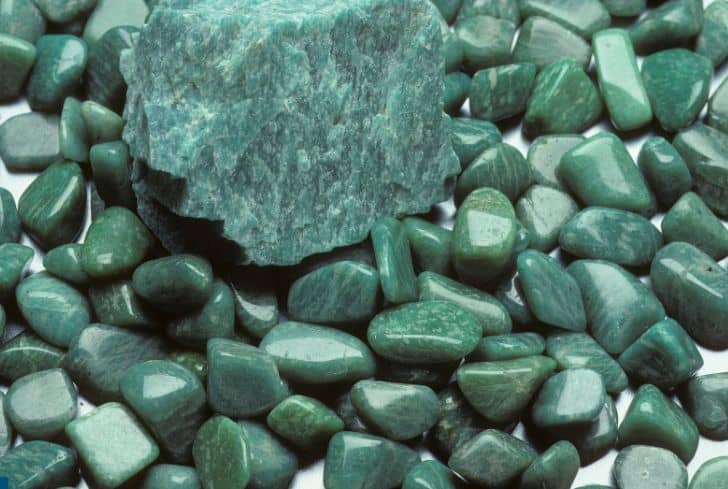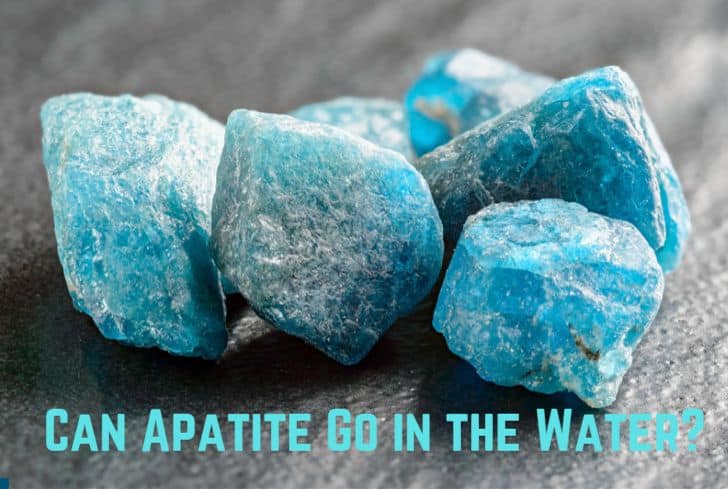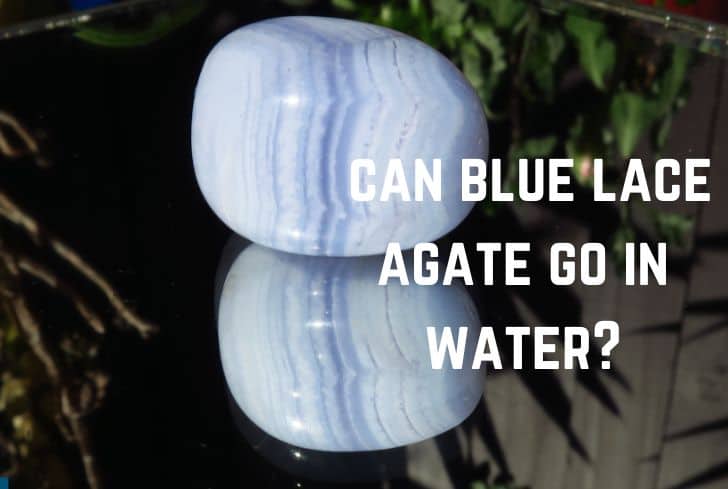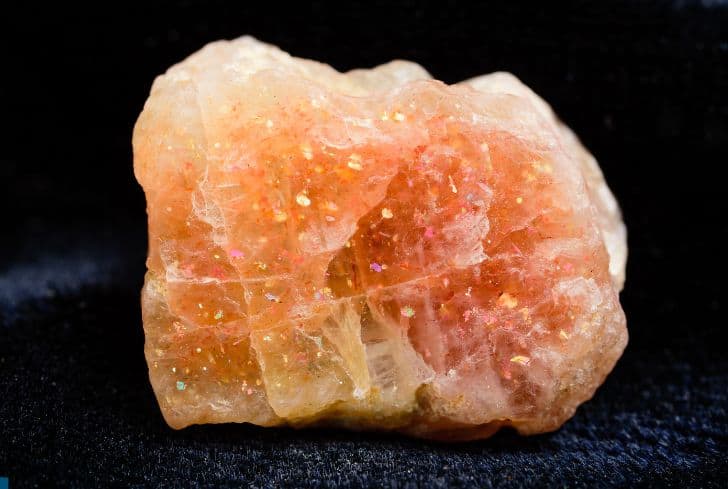Can Amazonite Go in Water? (Yes, But…)

Amazonite, also known as Amazon Stone, is a beautiful bluish-green mineral belonging to a potassium feldspar category called Microline. Its name comes from the Amazon River, from which the stones are believed to have been formerly obtained.
In this article, we are going to discuss whether you should put Amazonite in water or not. As in the case of all minerals, it’s important to learn about their composition to take care of them. We will begin by looking at some of the properties and sources of the gemstone. Then we will look at its interaction with water and finally discuss the right ways to clean it.
Can Amazonite Crystals Go in the Water?
Yes, Amazonite crystals can be put into water, but they should not be immersed for a long time. On the Mohs Hardness scale (a measure of a mineral’s relative hardness), Amazonite has a score of 6-6.5 which means it is slightly above the threshold level and can handle water a bit but be careful not to let it submerged for long.
Moreover, the water in which Amazonite has been put should never be consumed because it is a potassium feldspar crystal. K-feldspar is dangerous to health because it contains small amounts of radioactive uranium (eventually forming radon gas), which according to EPA, is responsible for about 1/3rd of lung cancer deaths in the U.S. among non-smokers.
What is Amazonite Made From and Where is it Found?
Amazonite has the chemical formula of KAlSi3O8. It is a Microline with a triclinic crystal structure (the gemstone’s axes are of different lengths and do not meet at 90 degrees). Amazonite is found in alkali-rich plutonic rocks and other rocks such as granites, pegmatites, syenites, etc.
It has been used for thousands of years, with cultures in the Indus Valley and North Africa cutting it as early as 5,200 BCE. Its colours range from pale green to dark green and bluish-green, and the stone usually comes with white marks. For ages, these gemstones have been turned into beautiful carvings and cabochons.
Amazonite has been related to the Amazon river since the 18th century, and the famous mineralogist August Breithaupt officially gave the stone its name in 1847. But strangely, there are no known sources of the stone in the Amazon river or the rainforest.
Earlier, these stones were found almost exclusively in the Ilmensky Mountains in Russia, where they occurred in granitic rocks. But now, Amazonite stones are found all around the globe: in granitic rocks of China and Libya; in alkali granite rocks of Mongolia; in pegmatite rocks of Sweden and the United States (Virginia), etc.
Is Amazonite Safe in the Water?
Yes, Amazonite is safe in the water, but it should never be immersed for a long time. Its hardness is 6-6.5 on the Mohs Scale, which is just above the required value of 5 for minerals to be water-safe. Also, since it’s a potassium feldspar stone, water that has interacted with the crystal should never be consumed because it is dangerous to health.
In general, a hardness of 6-6.5 means that amazonite is slightly softer than other common jewellery stones like quartz. Amazonite also has perfect cleavage and can break easily. Therefore, these stones are prone to scratching from common use.
But these stones are still great for jewellery that doesn’t experience excessive wear and tear, such as pendants, earrings, and brooches. They can also be turned into amazing ring stones with added protection.

What Happens When You Put Amazonite in Water?
Amazonite does not get damaged when you put it in water. It has a hardness of 6-6.5 on the Mohs Hardness scale, which is just above the limit, and it should therefore not be immersed for long. Letting it underwater for a long time or repeatedly can damage the exterior surface of the stone, making the stone lose its shine and color.
One should also note that once Amazonite is put into water, it makes the water undrinkable. This is because the stone is a potassium feldspar stone, which is dangerous to health.
Putting it in water for a reasonable amount of time is a great way of cleaning the Amazonite stone, which we will discuss later in this article.
Can Amazonite Go in Salt Water?
While it’s safe to put Amazonite in regular water for cleaning, putting it in salt water isn’t a great idea. Salt is a corrosive agent that can penetrate the stone and cause damage. It is much more damaging than tap water and can lead to cracking.
If you are still keen on using salt water, make sure that you let the stone stay in it only for a short amount of time. In general, letting Amazonite stay underwater for long can also lead to the creation or expansion of small fissures in the stone, which can lead to irreparable damage.
Can Amazonite Go in the Sun?
Yes, Amazonite can go in the sun, but make sure you don’t leave it for long otherwise it can cause decoloration. 3-4 hours is a good amount of time, and it will sufficiently charge your stone.
If you are afraid of harming the stone under harsh sunlight, you can put it behind a window. The glass will filter out the harsh UV rays, decreasing the chances of damaging your stone. You can also try leaving the stone out during the gentle morning hours instead of the afternoon time when the sun is much harsher.
When you are wearing the stone, it’s alright to wear it on a sunny day. But when you are sunbathing, you might want to take it off just to be on the safe side. This will also help you avoid any strange tan lines.
Many people believe that Amazonite soothes anxiety and clears the mind. This is why the Amazonite is also called the Hope Stone; it calls on the inner spirit to wake up from its slumber and pursue things with commitment.
Cleaning and charging the stone under the stone are said to keep the positive energy of the Amazonite intact. While the spiritual claims are mostly a matter of belief, the bluish-green color of the stone seems to stand for both the blue of the waters and the green of the lands, thereby symbolizing a harmony of mental and physical well-being.
In any case, scientifically, the Amazonite can certainly be put under the sun for a reasonable amount of time.
Is Amazonite Stone Expensive?
No. Despite its rarity, Amazonite stone is not expensive, which is why it is quite popular. It is not the hardest of stones, but it’s still a great choice for jewelry.
Amazonite stones lack transparency. This is why they are rarely faceted (turning a rough piece of the mineral into a stone with numerous flat planes/facets suitable for jewelry). Still, given their beautiful bluish-green color, these stones are great for people who like opaque stones.
What causes the Amazonite to have its beautiful blue-green color? Well, that is a bit of a mystery. Some people used to believe that the color was due to copper because copper compounds often have blue-green colors.
But in 1985, a study suggested that lead and water were responsible for the color of the Amazonite. Further studies also suggest rubidium and thallium as possible sources. All in all, we can say that the color of Amazonite is the aggregate effect of several elements.
Coming back to jewelry, the Amazonite stones can let you acquire some beautiful pieces at an affordable price. But, given their softness (6-6.5 hardness), it’s important to recognize that they are not as hard as regular gemstones.
Therefore, they should only be used for jewels that don’t undergo a lot of rough use, such as pendants, earrings, etc. With protective settings, the stones can be strengthened and then used in rings as well.
How to Clean Amazonite Crystal?
Using mechanical cleaning systems such as steam or ultrasound can severely damage the stone. This is because untreated Amazonite can often have internal fractures, and these fractures can expand further when using mechanical systems. Therefore, it is much better to use water to clean Amazonite.
You can follow these steps to clean your Amazonite stones with water:
- For Amazonite jewelry, put the piece under water for a brief amount of time.
- Then pat it dry with a cloth.
- If required, you can also use a gentle dishwashing detergent to get rid of oil and dirt. Use a soft brush to remove stains.
- If your stone has been treated with oil, cleaning it with a bar of soap might remove that covering and make your stone look dull. So, after you finish cleaning, treat your stone with the same oil again to give it a shinier finish.
Conclusion
In this article, we have discussed whether Amazonite can go in the water or not. We began by looking at the composition, hardness, and sources of the stone. Finally, we talked about its interaction with water—given its hardness of 6-6.5, the stone is safe underwater—and how to clean it.






